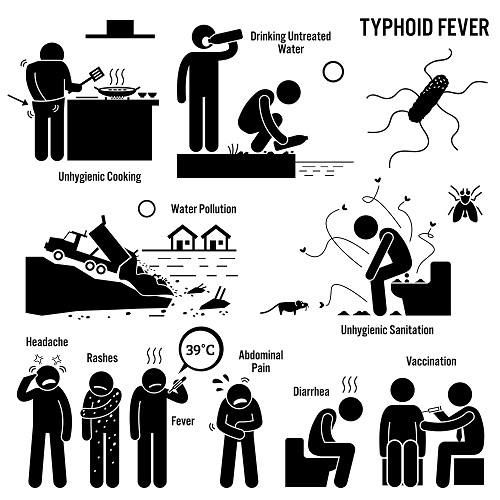

Epidemiology is the study of the prevalence, distribution, and consequences of illnesses and injuries in humans. Epidemiological anthropology explains the etiological elements that lead to health incidence and prevalence, with a focus on population diversity. Medical anthropologists investigate disease patterns and they discover the cultural characteristics of how people respond to illness. They examine the illnesses that afflict humanity and how human groups organise themselves to address and comprehend the root of the pain.

Human bodies are the host to a variety of creatures and the microbes are beneficial and even safe in most cases. However, some microbes have the potential to cause diseases in different instances. Disorders triggered by microorganisms such as bacteria, fungi, viruses, and parasites are known as infectious diseases.
It is common for certain infectious diseases to spread from one individual to another and others are spread by animals or insects. It is also transmitted by the consumption of contaminated water or food or in contact with other environmental organisms.
The skin and nasal passages serve as the primary defence against infectious pathogens invading the human body. Infectious pathogens may penetrate tissues that have been damaged or altered by a previous illness. These pathogenic agents can cause a specific infectious disease or they can enter into the bloodstream and spread throughout the body causing septicemia.

Description: The illness is caused by an unhygienic lifestyle such as poor sanitation and drinking untreated water.
The response of a living creature or tissue to a stimulus is known as a biological response. The human body recognizes and protects itself from bacteria, viruses, and other substances which might seem foreign and hazardous through the immune response.
Immune responses can be altered by chemicals that are known as biological response modifiers. They can either boost or decrease immune response and they can be either endogenous or exogenous. A few of these compounds stimulate the body’s reaction to an infection, while others prevent the response from worsening.
An illness identified as a non-communicable disease that cannot be transferred from one individual to another. Moreover, it lasts a very long period and is occasionally referred to as chronic sickness. In non-infectious diseases, the entire complex of external conditions and biological responses must be taken into consideration for regional heterogeneity.
The four primary categories, according to the World Health Organisation (WHO), are as follows −
Diabetes
Cancer
Chronic respiratory disorders
Cardiovascular diseases.
Malnutrition is characterised by inadequate or excessive nutrient intake, an unbalanced daily consumption of vital nutrients, or poor nutrient use. Poor nutrition, adiposity, and overweight are part of the simultaneous burden of malnutrition and are therefore non-communicable diseases connected to diet.
Malnutrition is an ecological issue that does not impact alone. It is closely associated with family dysfunction, illiteracy, and hopelessness. Poor people are unable to buy the quantity and grade of food they need for their families. This sets off a vicious chain of poverty, malnutrition, reduced ability to work, poor income, and social inequality.
It is caused by a variety of factors that includes a lack of understanding about the nutritional significance of food, irrational food ideas, and improper caring for children and feeding practices. Acute malnutrition can be triggered by illnesses such as malaria, measles, or recurring diarrheal illnesses, which can also worsen the underlying nutritional deficiency.
The prevalence and mortality of diseases among various populations epidemiology employ these statistics. The global spread of diseases caused by nutritional deficiencies has been depicted by the American Geographical Society. The inhabitants of India, South America, Africa, and Southeast Asia are frequently protein deficient.
The northern hemisphere, the higher altitudes of Southeast Asian nations, and certain African people are particularly susceptible to mineral deficiencies. Multivitamin deficiency is common in the Middle East, Africa as well as some pacific nations.
Nutritional stress is the impact of a lack of appropriate nourishment that can lead to metabolic disturbances. For example, insufficient food intake and the cumulative effects of infection usually result in diarrhoea during the lactation stage.
Severe nutritional stress can cause death, especially in children. This can happen through starvation or an abrupt shortage of critical nutrients. It inhibits physical growth, saps vitality, and makes people more susceptible to the majority of infectious diseases.
Epidemiological anthropology analyses the transmission of particular illnesses and disorders in human groups located all over the world. Biological, social, and cultural contexts also play a significant effect in the spread of illnesses. The environmental features of diseases are influenced by both the biotic and abiotic elements of the environment. Early teens and infancy are usually characterised by nutritional stress, which leads to child and infant mortality.
Q1. How does poverty lead to malnutrition?
Ans. Malnutrition is a result of poverty and is mediated by insufficient nutritional intake, a shortage of access to healthcare, poor environmental conditions, and a lack of accessibility to proper hygiene and sanitation. It reduces revenue, lowers productivity, and raises healthcare expenditures.
Q2. What is the role of a biological response modifier?
Ans. Immunomodulators commonly referred to as biological response modifiers are a class of drugs that focus on the pathogenesis of the disease. They are employed either as first-line treatments for autoimmune illnesses or when more traditional therapies have failed.
Q3. How is anthropology related to health?
Ans. The analysis of human health and the way it interacts with cultural and natural contexts over time is known as the anthropology of health. It demonstrates how socioeconomic and cultural factors affect the biological and health consequences of human communities.